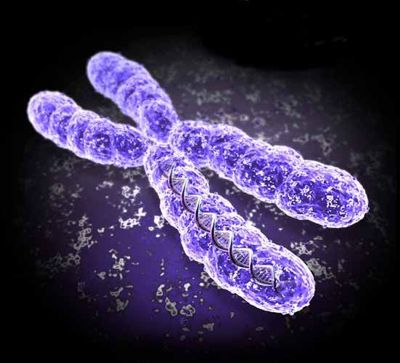Team:Missouri Miners
From 2011.igem.org
| Line 38: | Line 38: | ||
| - | <div id="box" style="position: relative; width: | + | <div id="box" style="position: relative; width: 740px; margin-left: 30px; top:-400px; padding: 5px; background-color: #000000;"> |
<div id="template" style="font-weight: regular; font-size: medium; color: silver; padding: 5px;"> | <div id="template" style="font-weight: regular; font-size: medium; color: silver; padding: 5px;"> | ||
| - | <h1> | + | <h1>Welcome to the Missouri Miners Wiki page! </h1><br /> |
| - | <p class="sectionheader"><b> | + | |
| - | + | <p class="sectionheader"><b>Project Background</b></p> | |
| + | |||
| + | Type one diabetes is characterized by the body’s inability to produce insulin and is caused by the death or malfunction of the β-cells in the pancreas. Insulin is the hormone that decreases the blood glucose concentration by inducing the cellular intake of glucose. | ||
| + | Insulin is produced in the Islets of Langerhans (a section of the pancreas) where glucose in the blood is detected. β-cells in this region produce insulin by monitoring the ratio of ATP (adenosine triphosphate) versus ADP (adenosine diphosphate). When the ATP level is increased the K+ channels close, creating an increase of Ca+ ions in the cell. The unbalance of ions signals the golgi complex to secrete insulin. If the β-cells die or malfunction then insulin cannot be produced. (http://www.abcam.com/index.html?pageconfig=resource&rid=10602&pid=7) | ||
| + | |||
| + | <p class="sectionheader"><b>Project Justification</b></p> | ||
| + | |||
| + | In the United States alone, it is estimated that 3 million people are affected by type one diabetes. Complications that arise due to this disease include heart disease, stroke, high blood pressure, blindness, kidney disease, and neuropathy. The American Diabetes Association has estimated that diabetes costs America over $200 billion per year in diagnosis and treatment (http://www.diabetes.org ). | ||
| + | |||
| + | <p class="sectionheader"><b>Project Goal</b></p> | ||
| + | |||
| + | Our goal is to model a system that can measure glucose levels and produce insulin as needed. In the future, this system could lead to cheaper blood glucose testing devices or a economic and efficient insulin pump. | ||
| + | To achieve this goal we are utilizing the EnvZ-OmpR signal transduction pathway. This pathway is endogenous to E.Coli and has been well characterized. EnvZ is a osmolarity sensor on the inner membrane of E.Coli. When glucose is added to the environment it induces a change in osmolarity and activates EnvZ. EnvZ then phosphorylates the OmpR transcription factor. When OmpR is phosphorylated it binds to the OmpR promoter and recruits RNA polymerase to begin downstream transcription. | ||
| + | |||
</div> | </div> | ||
</div> | </div> | ||
Revision as of 00:13, 26 September 2011
Project Center
Introduction
Lorem ipsum dolor sit amet, consectetur adipiscing elit. Proin tellus ligula, blandit et sollicitudin vitae, pharetra dictum nibh. Cras sed dui non ante bibendum fringilla vel id turpis.
Welcome to the Missouri Miners Wiki page!
Project Background
Type one diabetes is characterized by the body’s inability to produce insulin and is caused by the death or malfunction of the β-cells in the pancreas. Insulin is the hormone that decreases the blood glucose concentration by inducing the cellular intake of glucose. Insulin is produced in the Islets of Langerhans (a section of the pancreas) where glucose in the blood is detected. β-cells in this region produce insulin by monitoring the ratio of ATP (adenosine triphosphate) versus ADP (adenosine diphosphate). When the ATP level is increased the K+ channels close, creating an increase of Ca+ ions in the cell. The unbalance of ions signals the golgi complex to secrete insulin. If the β-cells die or malfunction then insulin cannot be produced. (http://www.abcam.com/index.html?pageconfig=resource&rid=10602&pid=7)
Project Justification
In the United States alone, it is estimated that 3 million people are affected by type one diabetes. Complications that arise due to this disease include heart disease, stroke, high blood pressure, blindness, kidney disease, and neuropathy. The American Diabetes Association has estimated that diabetes costs America over $200 billion per year in diagnosis and treatment (http://www.diabetes.org ).
Project Goal
Our goal is to model a system that can measure glucose levels and produce insulin as needed. In the future, this system could lead to cheaper blood glucose testing devices or a economic and efficient insulin pump. To achieve this goal we are utilizing the EnvZ-OmpR signal transduction pathway. This pathway is endogenous to E.Coli and has been well characterized. EnvZ is a osmolarity sensor on the inner membrane of E.Coli. When glucose is added to the environment it induces a change in osmolarity and activates EnvZ. EnvZ then phosphorylates the OmpR transcription factor. When OmpR is phosphorylated it binds to the OmpR promoter and recruits RNA polymerase to begin downstream transcription.
Test
Testing
Lorem ipsum dolor sit amet, consectetur adipiscing elit.
The Team of 2011
 "
"






